Veterinary Reference Laboratories Market by Service Type (Clinical Chemistry Services, Immunodiagnostics, Molecular Diagnostics, Urinalysis, Other Services), Animal Type (Companion Livestock), Application (Clinical Pathology, Parasitology, Productivity Testing, Pregnancy Testing, Toxicology Testing, Virology, Bacteriology), Regions, Key Players – Global Forecast to 2030
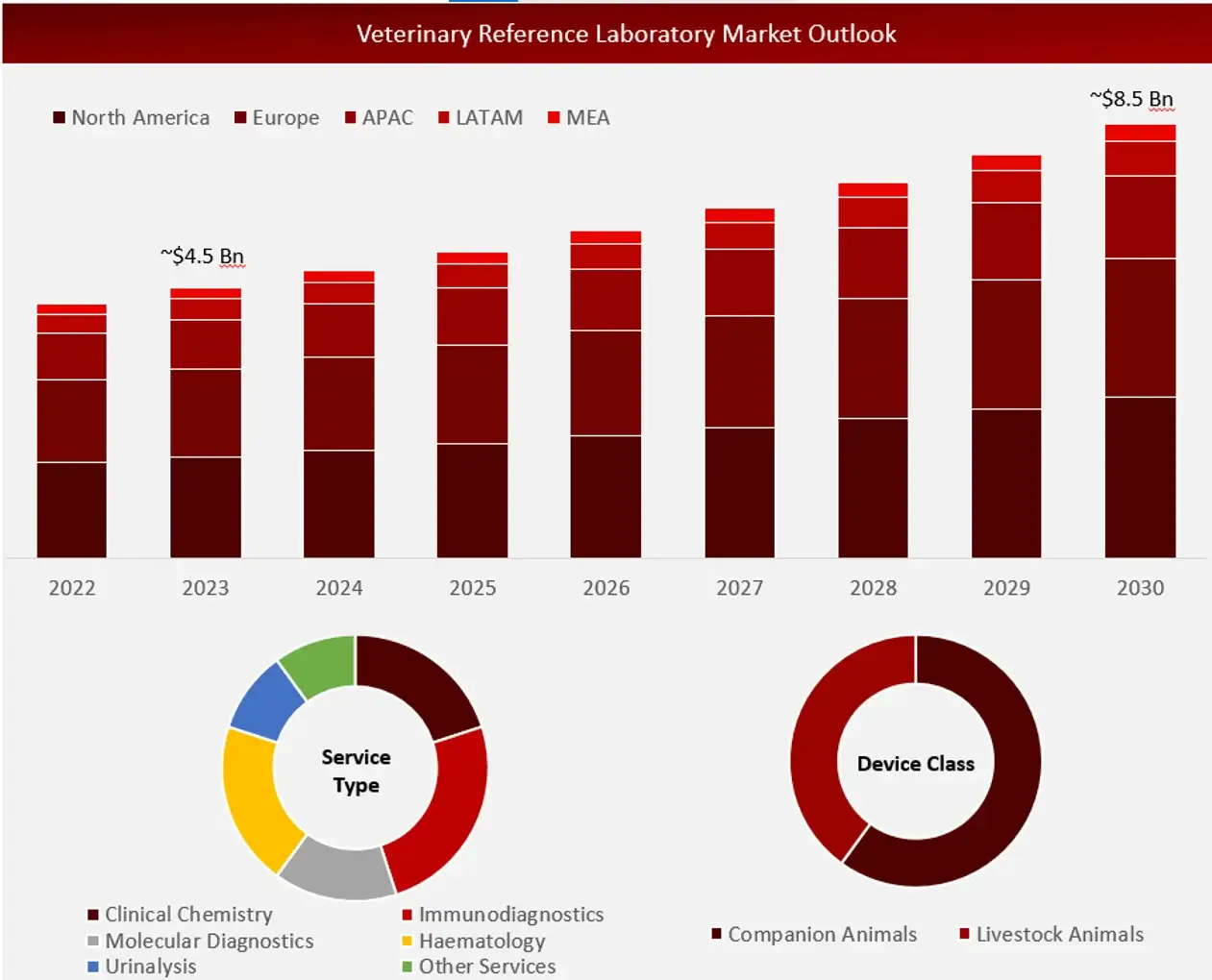 Sources: Company Websites, Annual Reports, SEC Filings, Press Releases, Investor Presentation, Paid Database, and Wissen Research Analysis.
Sources: Company Websites, Annual Reports, SEC Filings, Press Releases, Investor Presentation, Paid Database, and Wissen Research Analysis.Wissen Research analyses that the global veterinary reference laboratory market is estimated at ~USD 4.5 billion in 2023 and is projected to reach ~USD 8.5 billion by 2030, expected to grow at a CAGR of ~10% during the forecast period, 2023-2030.
Veterinary reference laboratories are specialized institutions that perform several essential functions in veterinary sciences, including diagnosing animal diseases, determining appropriate treatment options, and overseeing disease prevention and monitoring. These laboratories offer a wide range of services such as virology, clinical pathology, bacteriology, parasitology, toxicology, pregnancy testing, and more. They play a crucial role in preventing zoonotic diseases, promoting animal health and welfare, ensuring safe food production, and safeguarding public health.
Driving Factor: Increasing awareness of animal health
The importance of animal health grows among pet owners and livestock producers, there is a heightened recognition of the value of early disease detection and prevention. Pet owners are increasingly aware that regular check-ups and diagnostic tests can help detect health issues in their pets early on. Similarly, livestock producers understand that proactive health monitoring can prevent disease outbreaks and reduce economic losses. This growing awareness fuels the demand for diagnostic tests from veterinary reference laboratories, which offer specialized expertise and advanced technology for accurate and timely disease detection. Ultimately, the focus on early detection and prevention enhances the overall well-being of animals and supports the sustainability of both the companion animal and livestock industries.
Opportunity: Growth of the livestock sector
The growth of the livestock industry offers substantial opportunities for veterinary reference laboratories. With the global demand for meat, milk, and eggs on the rise, livestock production is expanding worldwide. This surge in production drives a greater need for veterinary services to maintain the health and productivity of animal herds. Veterinary reference laboratories can play a crucial role by offering advanced diagnostic testing, which aids in the early detection and treatment of diseases. This proactive approach not only helps prevent outbreaks and enhance animal welfare but also boosts farm profitability.
Challenge: Challenges in Awareness and Access to Veterinary Diagnostics
Rapidly increasing of pet ownership in developing countries like India and China, many pet owners and even veterinarians may not be fully aware of the advanced diagnostic services available through reference laboratories. Furthermore, there is often a limited understanding among veterinarians, pet owners, and livestock farmers regarding the importance and availability of veterinary reference laboratory services. They may not be familiar with the variety of tests and diagnostics offered or the benefits these services provide for animal health management. Additionally, in many emerging markets, access to veterinary reference laboratories is restricted due to factors such as geographic isolation, inadequate transportation networks, and a lack of healthcare facilities. This limited accessibility makes it difficult for individuals and organizations to utilize these services, even if they are aware of them. Consequently, this lack of awareness and accessibility impedes the growth of the market in these regions, as potential users are not fully taking advantage of the available veterinary healthcare options.
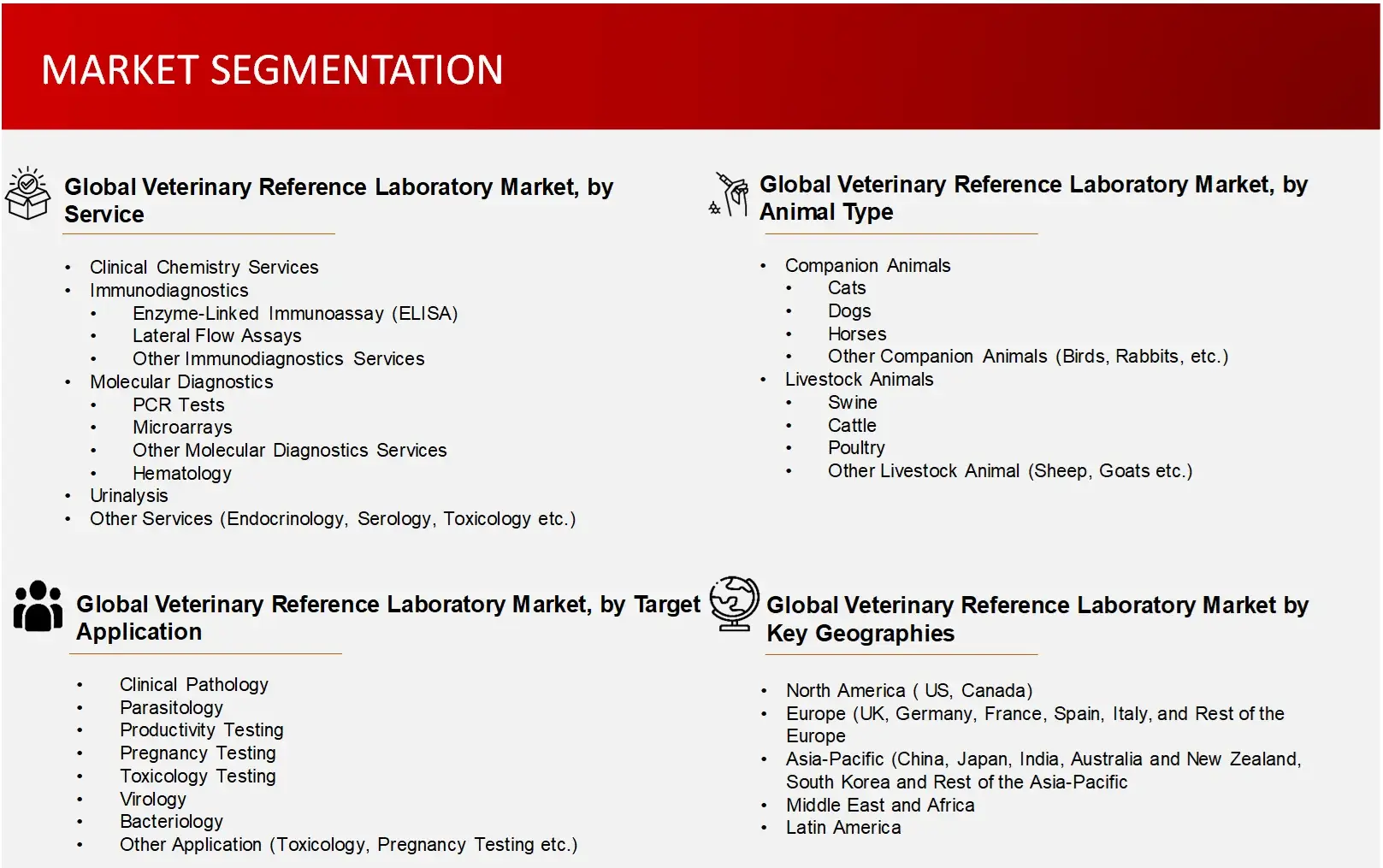 Sources: Company Websites and Wissen Research Analysis.
Sources: Company Websites and Wissen Research Analysis.
Clinical chemistry services segment to lead growth through 2024-2029
Clinical chemistry services in veterinary reference laboratories are seeing significant growth, boasting the highest compound annual growth rate (CAGR). This increase can be attributed to several factors, including heightened awareness among pet owners about the importance of preventive healthcare, which has led to more regular check-ups and diagnostic tests for their pets. Additionally, technological advancements have made these services more accessible and efficient, enabling faster and more precise diagnoses.
Companion animals segment of the industry is projected to have the highest CAGR
The companion animals segment is expected to experience the highest CAGR in the veterinary reference laboratory market. This growth is largely due to the rising trend of pet ownership globally, which has increased the demand for veterinary services and diagnostics for companion animals. Additionally, the strong emotional bond that people have with their pets often results in a greater willingness to invest in their health, further driving the growth of this segment in the veterinary reference laboratory market
Major Companies and Market Share Insights in Veterinary
Major players operating in veterinary reference laboratory market are IDEXX Laboratories, Inc. (US), Mars, Incorporated (US), Thermo Fisher Scientific Inc. (US), GD Animal Health (Netherlands), Zoetis Inc. (US), NEOGEN Corporation (US), LABOKLIN GMBH & CO. KG (Germany), VETLAB (India), Mira Vista Labs (US), Virbac (US), and, Vaxxinova ((Netherlands), and University of Minnesota (US) among others.
Introduction
Market Definition
A veterinary reference laboratory veterinary reference laboratory is a specialized facility dedicated to providing diagnostic testing and expert analysis for veterinarians and animal healthcare professionals. These labs offer a comprehensive array of services, including pathology, microbiology, serology, and molecular diagnostics, to aid in disease diagnosis, health monitoring, and the overall well-being of animals. These laboratories are essential to veterinary medicine, delivering accurate and timely sample analyses across a variety of animal species.
 Sources: Company Websites and Wissen Research Analysis.
Sources: Company Websites and Wissen Research Analysis.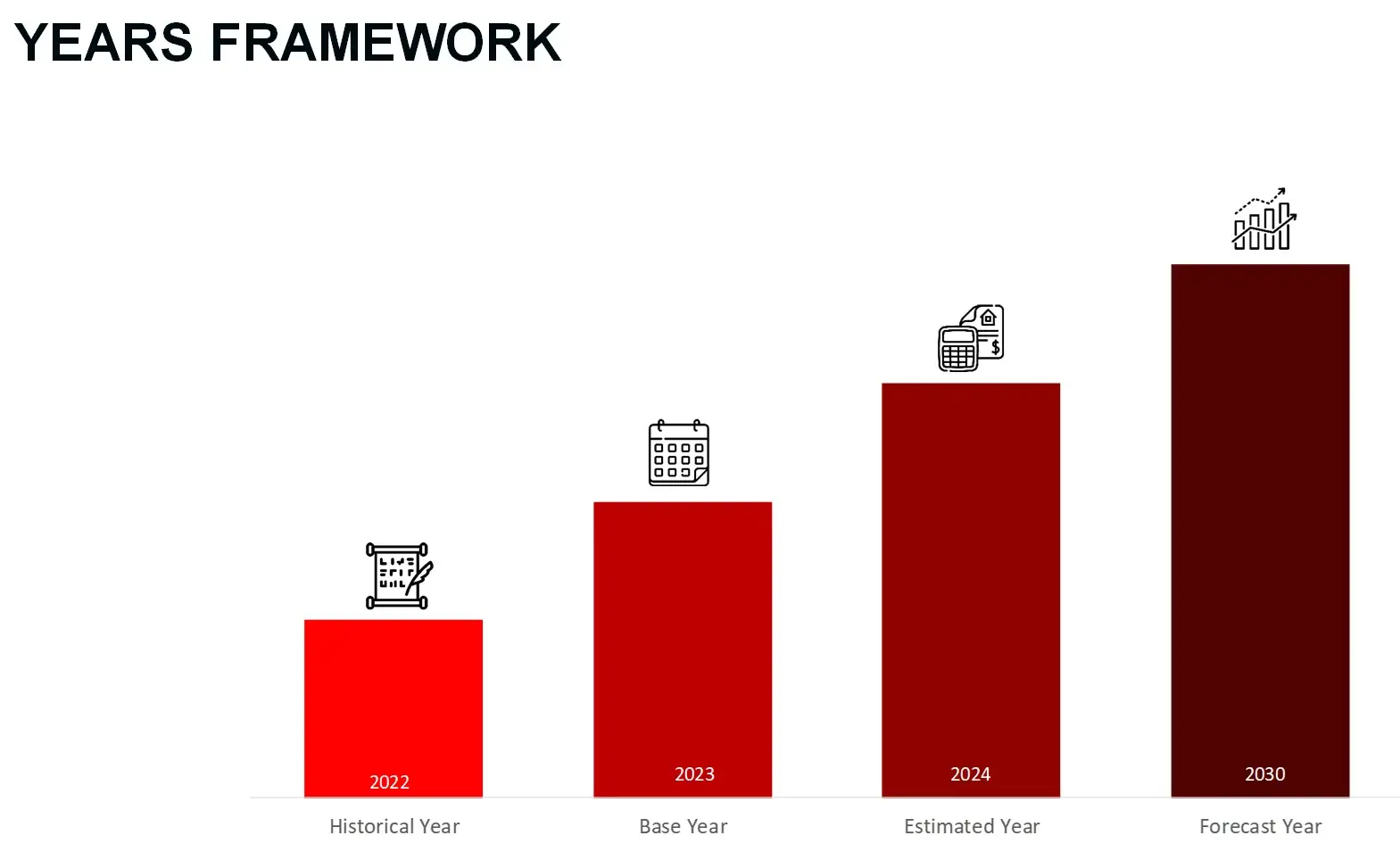 Sources: Wissen Research Analysis.
Sources: Wissen Research Analysis.Key Stakeholders
Key objectives of the Study
Research Methodology
The aim of the study is to examine the key market forces such as drivers, opportunities, restraints, challenges, and strategies of key leaders. To monitor company advancements such as patents granted, product launches, expansions, and collaborations of key players, analyzing their competitive landscape based on various parameters of business and product strategy. Markey sizing will be estimated using top-down and bottom-up approaches. Using market breakdown and data triangulation techniques, market sizing of segments and sub-segments will be estimated.
FIGURE: RESEARCH DESIGN
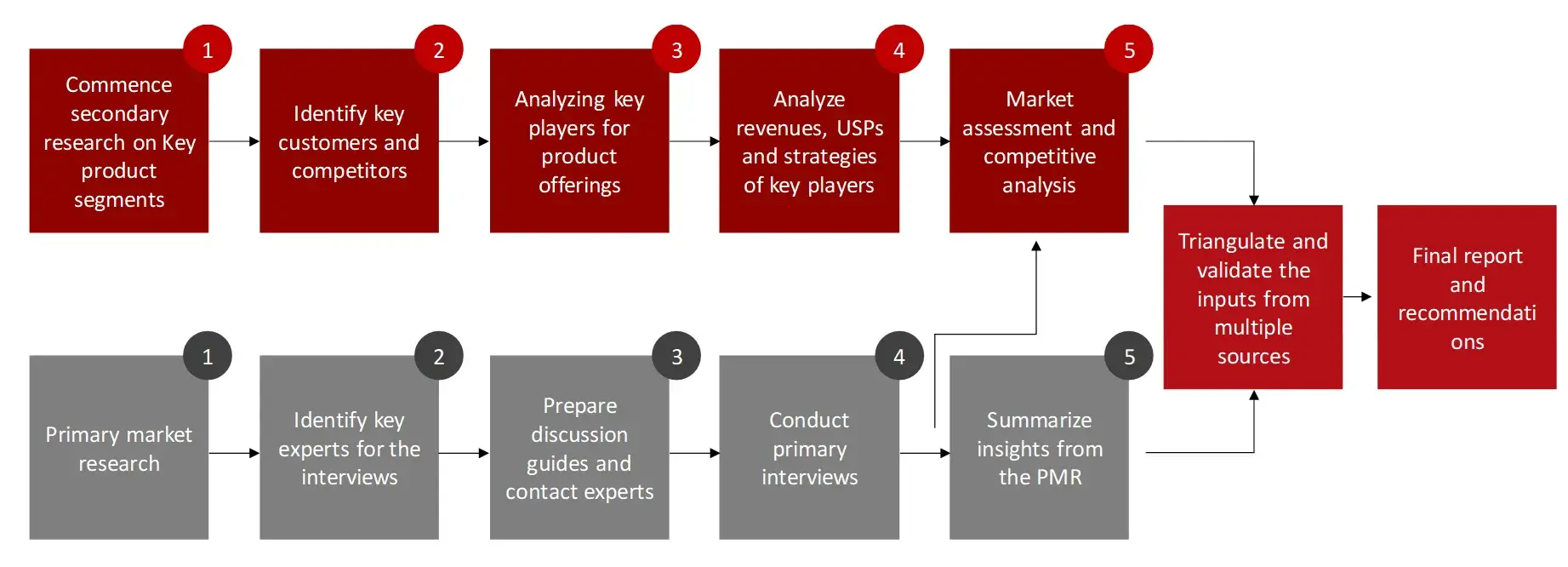 Sources: Wissen Research Analysis.
Sources: Wissen Research Analysis.Research Approach
Collecting Secondary Data
The process of collating secondary research data involves the utilization of databases, secondary sources, annual reports, investor presentations, directories, and SEC filings of companies. Secondary research will be utilized to identify and gather information beneficial for the in-depth, technical, market-oriented, and commercial analysis of the Veterinary Reference Laboratory market. A database of the key industry leaders will also be compiled using secondary research.
Collecting Primary Data
The primary research data will be conducted after acquiring knowledge about the Veterinary Reference Laboratory market scenario through secondary research. A significant number of primary interviews will be conducted with stakeholders from both the demand and supply side (including various industry experts, such as Vice Presidents (VPs), Chief X Officers (CXOs), Directors from business development, marketing and product development teams, product manufacturers) across major countries of Europe, Asia Pacific, North America, Latin America, and Middle East and Africa. Primary data for this report will be collected through questionnaires, emails, and telephonic interviews.
FIGURE: BREAKDOWN OF PRIMARY INTERVIEWS FROM SUPPLY SIDE
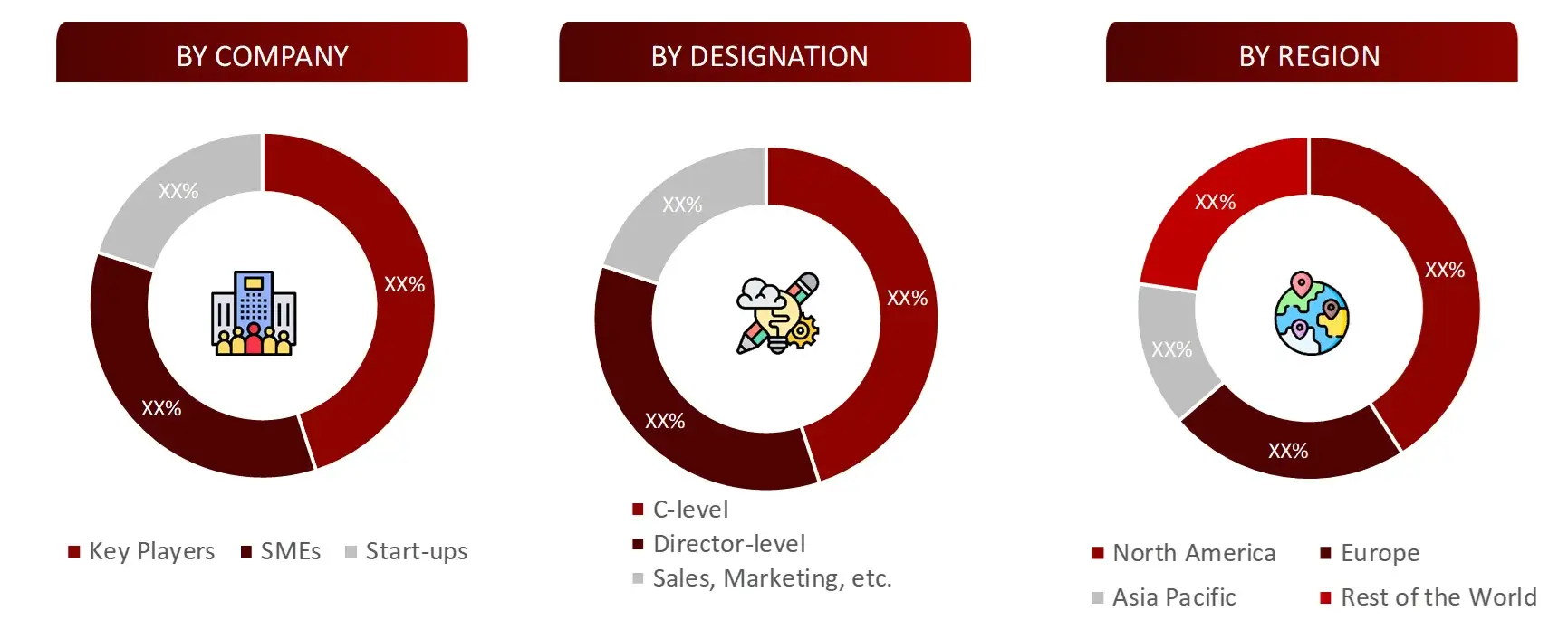
FIGURE: BREAKDOWN OF PRIMARY INTERVIEWS FROM DEMAND SIDE
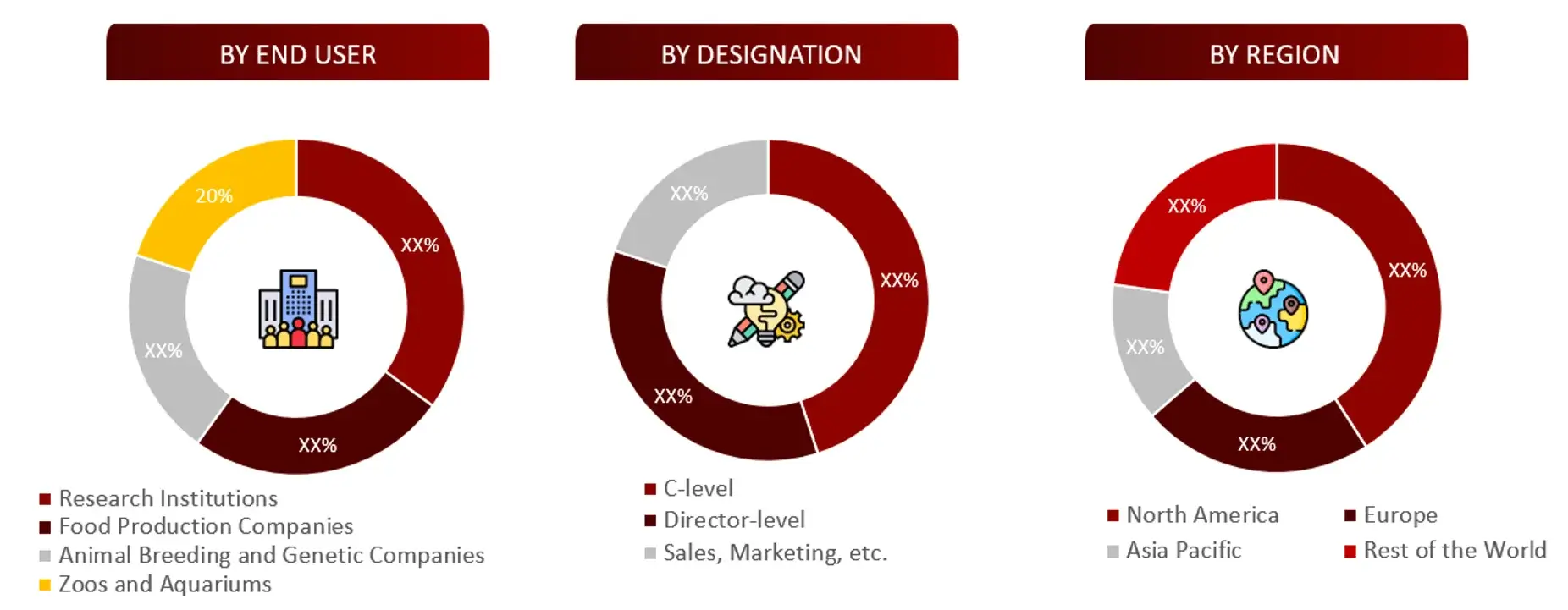
FIGURE: PROPOSED PRIMARY PARTICIPANTS FROM DEMAND AND SUPPLY SIDE
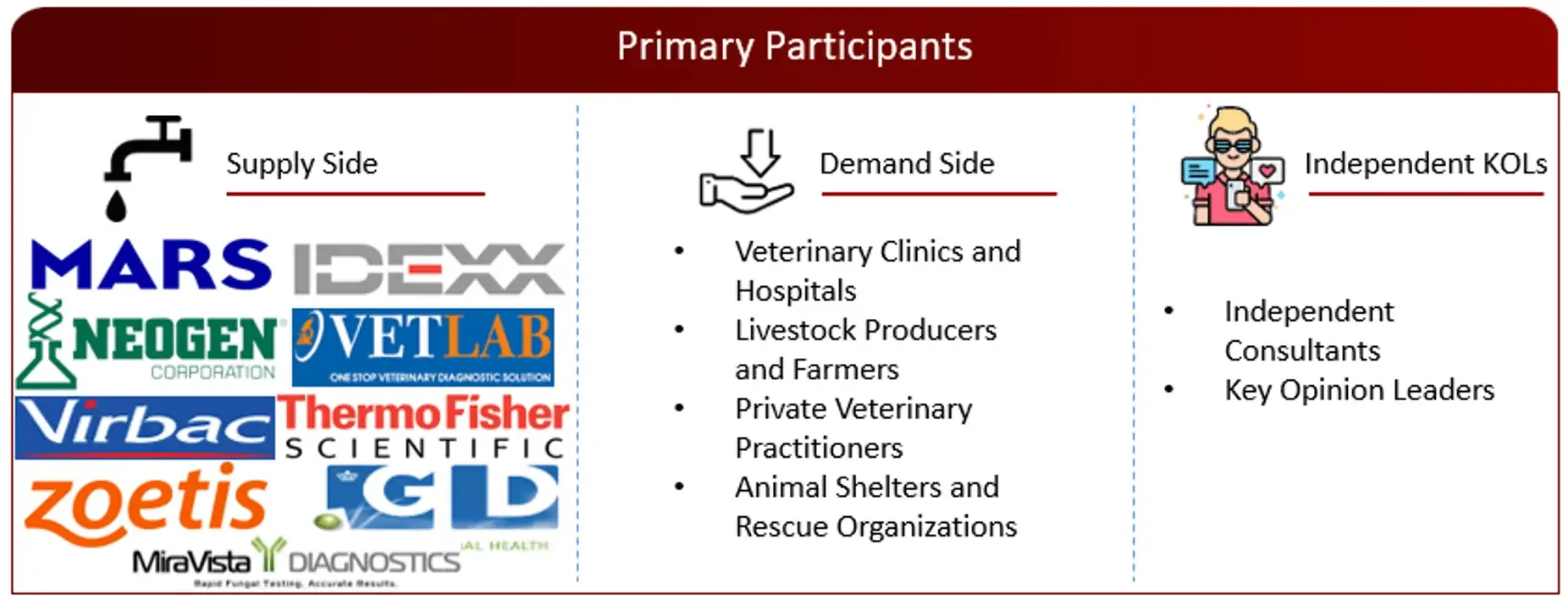
Market Size Estimation
All major manufacturers offering various veterinary reference laboratory services will be identified at the global / regional level. Revenue mapping will be done for the major players, which will further be extrapolated to arrive at the global market value of each type of segment. The market value of veterinary reference laboratory market will also split into various segments and sub segments at the region level based on:
FIGURE: REVENUE MAPPING BY COMPANY (ILLUSTRATION)
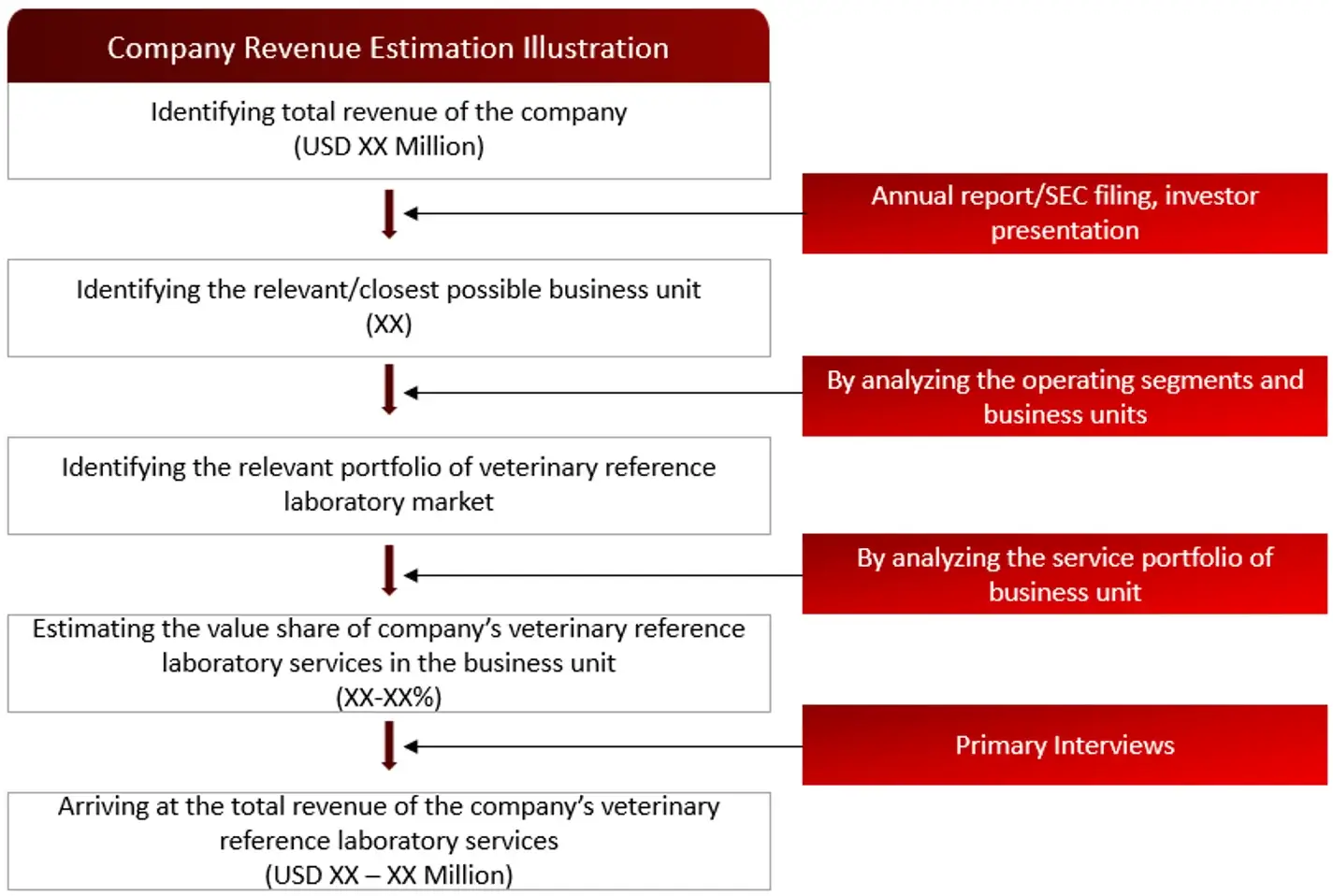 Sources: Company Websites, Annual Reports, SEC Filings, Press Releases, Investor Presentation, Paid Database, and Wissen Research Analysis.
Sources: Company Websites, Annual Reports, SEC Filings, Press Releases, Investor Presentation, Paid Database, and Wissen Research Analysis.FIGURE: REVENUE SHARE ANALYSIS OF KEY PLAYERS (SUPPLY SIDE)
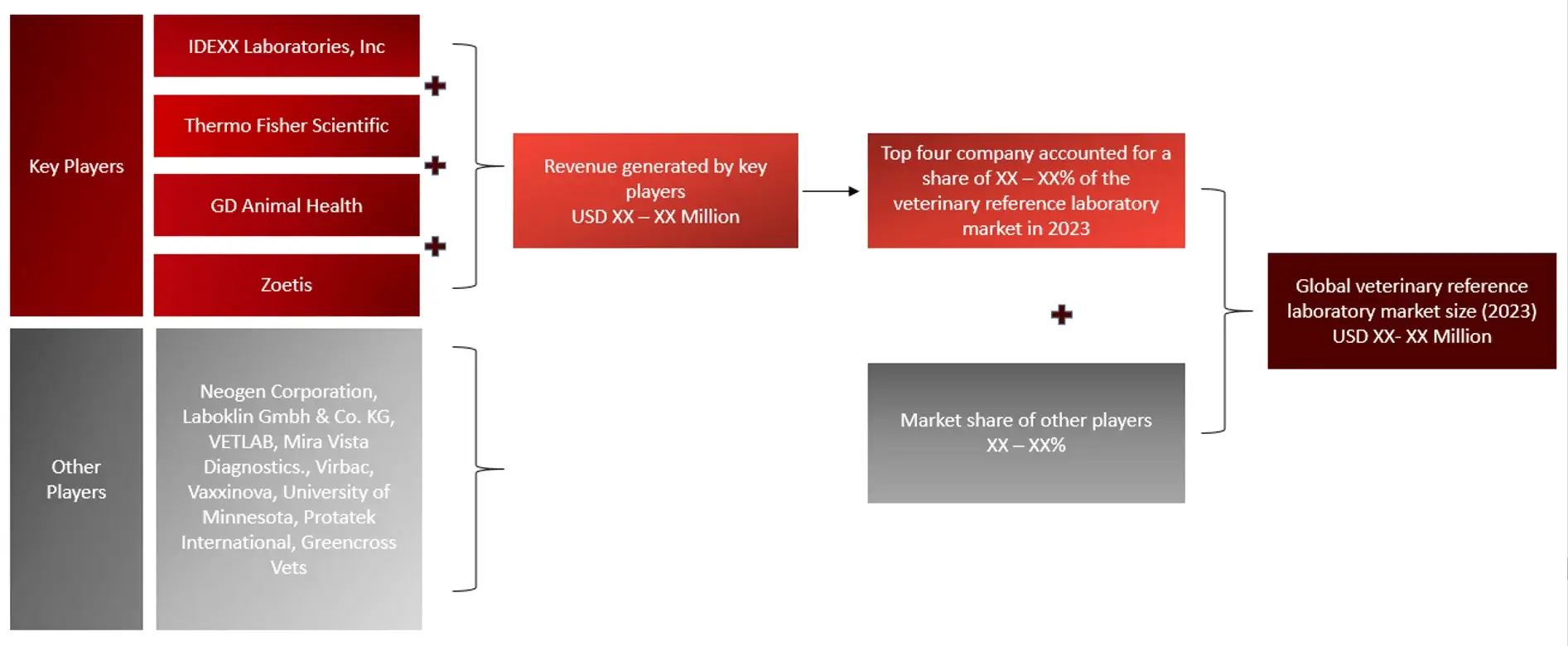
FIGURE: MARKET SIZE ESTIMATION TOP-DOWN AND BOTTOM-UP APPROACH
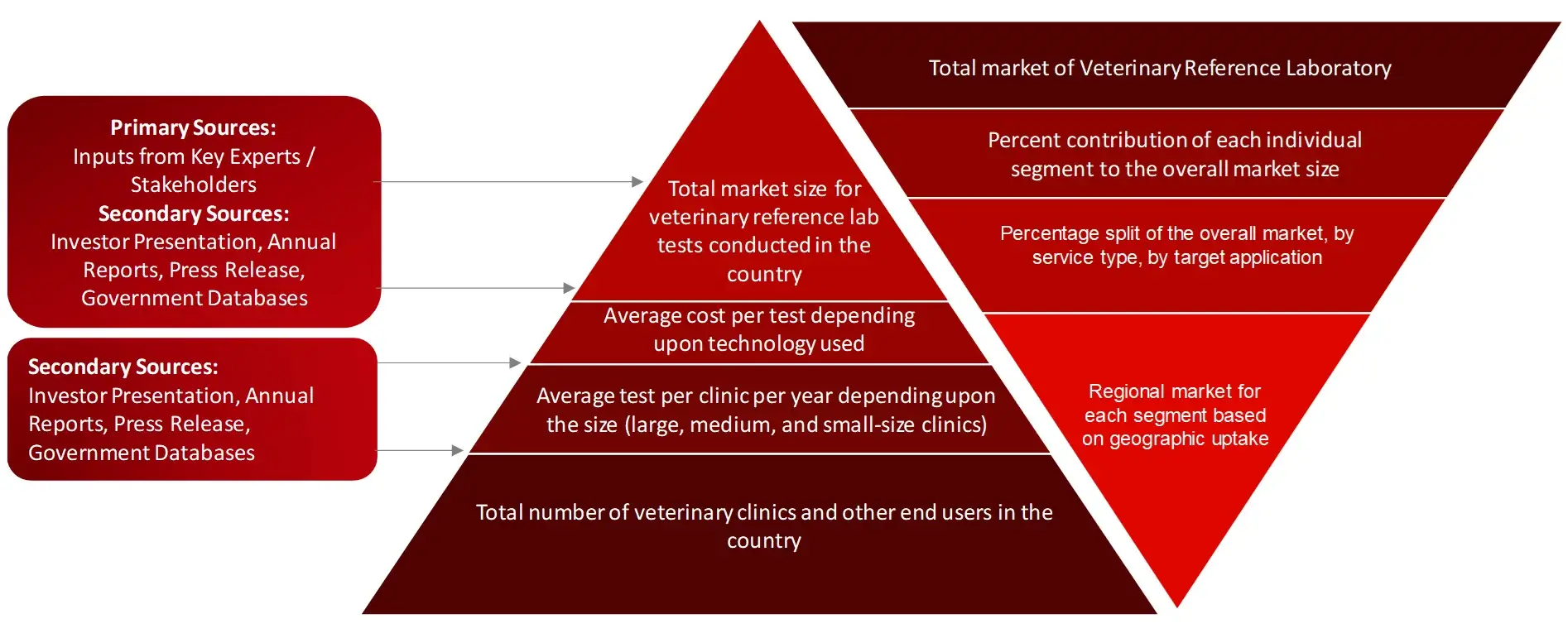 Sources: Company Websites, Annual Reports, SEC Filings, Press Releases, Investor Presentation, Paid Database, and Wissen Research Analysis.
Sources: Company Websites, Annual Reports, SEC Filings, Press Releases, Investor Presentation, Paid Database, and Wissen Research Analysis.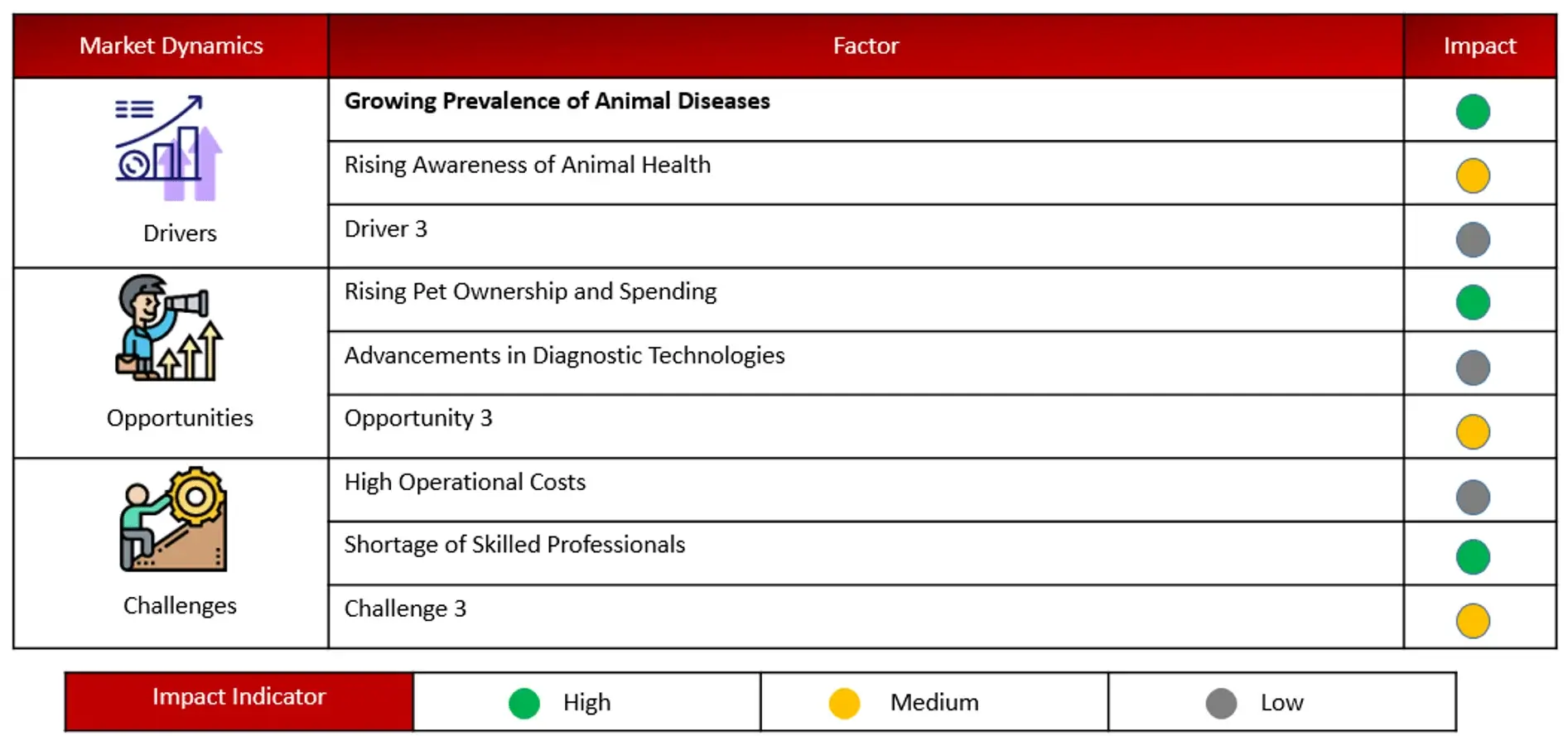 Sources: American Society for the Prevention of Cruelty to Animals, Royal Society for the Prevention of Cruelty to Animals, University of Veterinary Medicine Hannover (Germany), University of Veterinary Medicine Hannover (Germany), Centers for Disease Control and Prevention (CDC), UK Health Security Agency (UKHSA), National Health Institution (NIH), Company Website, Press Releases, Annual Reports, Paid Data Sources, and Wissen Research Analysis.
Sources: American Society for the Prevention of Cruelty to Animals, Royal Society for the Prevention of Cruelty to Animals, University of Veterinary Medicine Hannover (Germany), University of Veterinary Medicine Hannover (Germany), Centers for Disease Control and Prevention (CDC), UK Health Security Agency (UKHSA), National Health Institution (NIH), Company Website, Press Releases, Annual Reports, Paid Data Sources, and Wissen Research Analysis.FIGURE: GROWTH FORECAST ANALYSIS UTILIZING MULTIPLE PARAMETERS
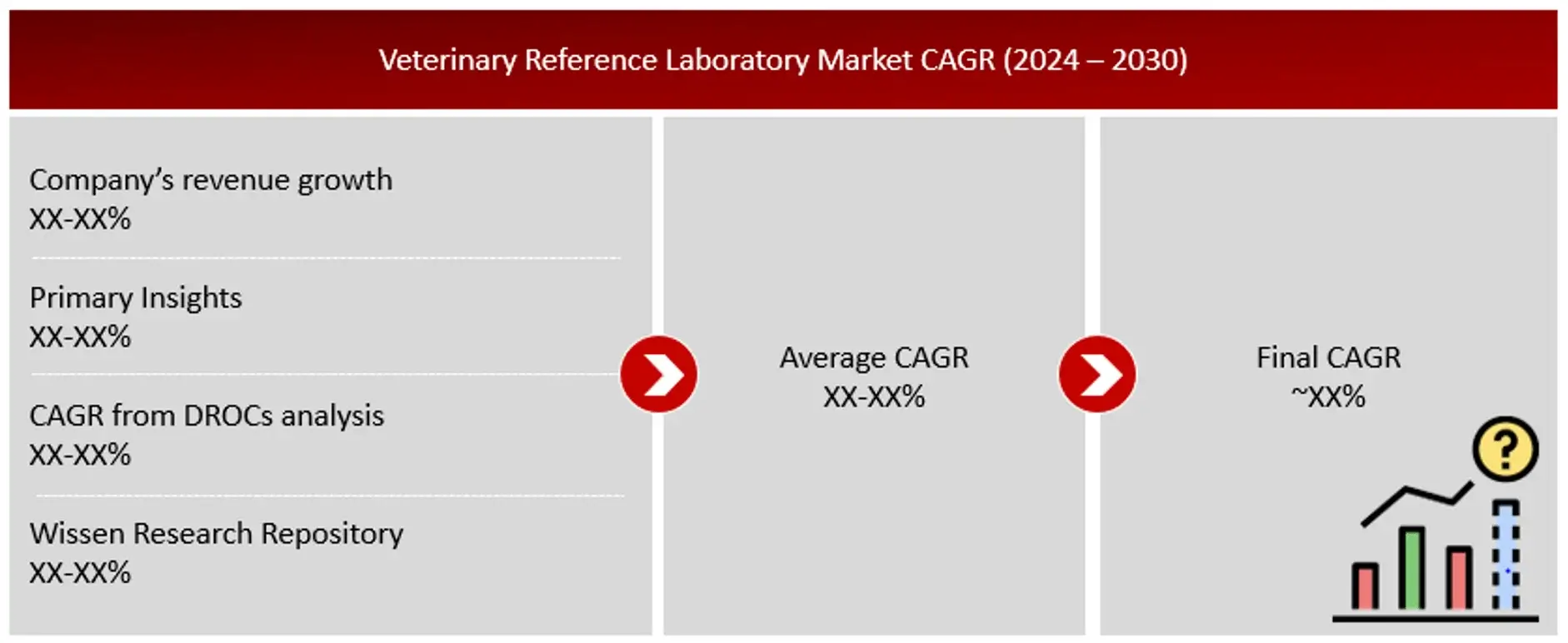 Sources: Company Websites, Annual Reports, SEC Filings, Press Releases, Investor Presentation, Paid Database, and Wissen Research Analysis.
Sources: Company Websites, Annual Reports, SEC Filings, Press Releases, Investor Presentation, Paid Database, and Wissen Research Analysis.Research Design
After arriving at the overall market size-using the market size estimation processes-the market will be split into several segments and sub segment. To complete the overall market engineering process and arrive at the exact statistics of each market segment and sub segment, the data triangulation, and market breakdown procedures will be employed, wherever applicable. The data will be triangulated by studying various factors and trends from both the demand and supply sides in the veterinary reference laboratory market.
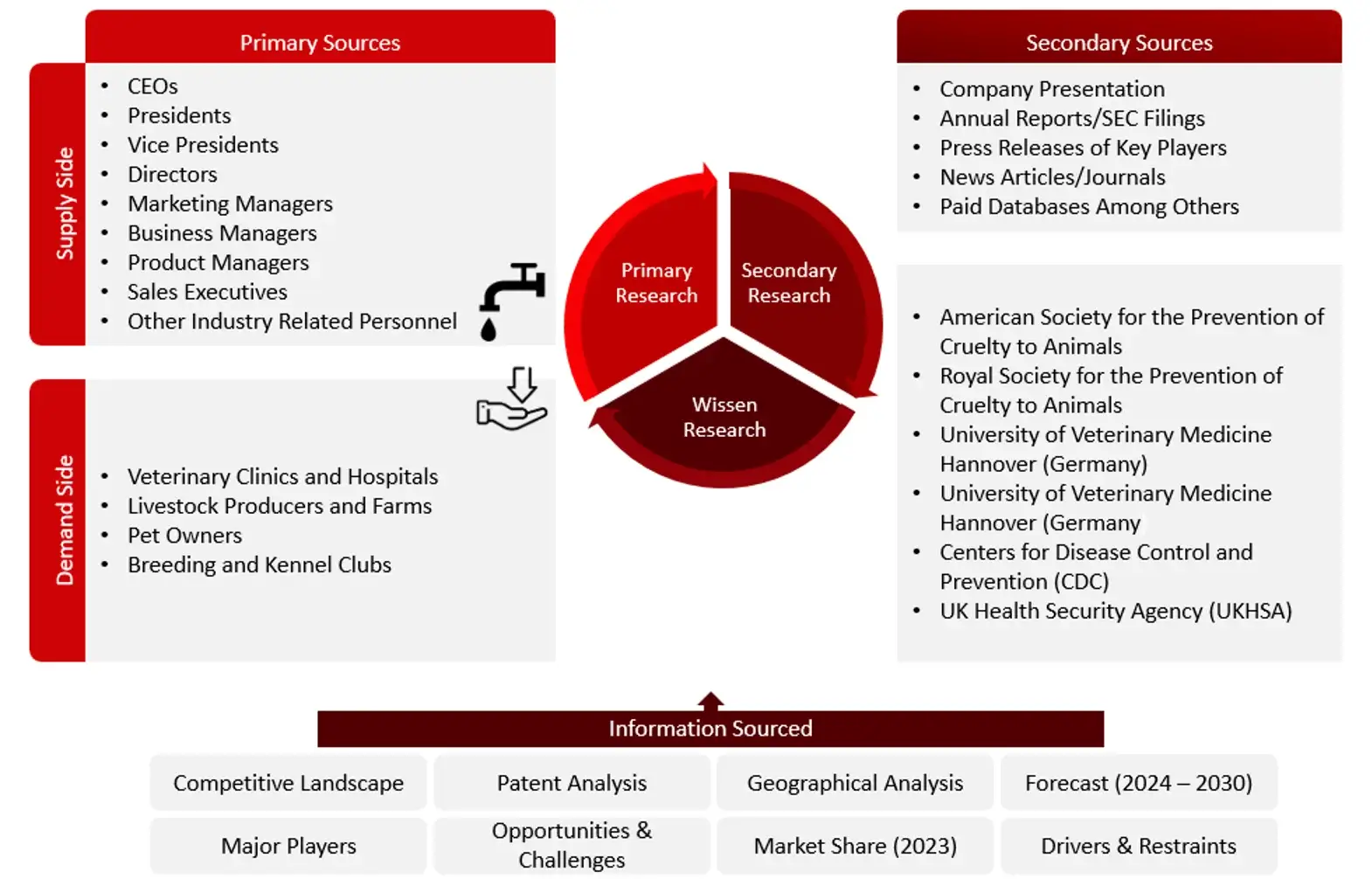 Sources: American Society for the Prevention of Cruelty to Animals, Royal Society for the Prevention of Cruelty to Animals, University of Veterinary Medicine Hannover (Germany), University of Veterinary Medicine Hannover (Germany), Centers for Disease Control and Prevention (CDC), UK Health Security Agency (UKHSA), National Health Institution (NIH), Company Website, Press Releases, Annual Reports, Paid Data Sources, and Wissen Research Analysis.
Sources: American Society for the Prevention of Cruelty to Animals, Royal Society for the Prevention of Cruelty to Animals, University of Veterinary Medicine Hannover (Germany), University of Veterinary Medicine Hannover (Germany), Centers for Disease Control and Prevention (CDC), UK Health Security Agency (UKHSA), National Health Institution (NIH), Company Website, Press Releases, Annual Reports, Paid Data Sources, and Wissen Research Analysis.1. Introduction
1.1 Key Objectives
1.2 Definitions
1.2.1 In Scope
1.2.2 Out of Scope
1.3 Scope of the Report
1.4 Scope Related Limitations
1.5 Key Stakeholders
2. Research Methodology
2.1 Research Approach
2.2 Research Methodology / Design
2.3 Market Sizing Approach
2.3.1 Secondary Research
2.3.2 Primary Research
3. Executive Summary & Premium Content
3.1 Global Market Outlook
3.2 Key Market Findings
4. Patent Analysis
4.1. Patents Related to Veterinary Reference Laboratory
4.2. Patent Landscape and Intellectual Property Trends
5. Market Overview
5.1 Market Dynamics
5.1.1 Drivers/Opportunities
5.1.2 Restraints/Challenges
5.2 End User Perception
5.3 Need Gap
5.4 Supply Chain / Value Chain Analysis
5.5 Industry Trends
5.6 Porter’s Five Forces Analysis
6. Global Veterinary Reference Laboratory Market, by Service Type (2022-2030, USD Million)
6.1 Clinical Chemistry
6.2 Immunodiagnostics
6.2.1 Enzyme-Linked Immunoassay (ELISA)
6.2.2 Lateral Flow Assays
6.2.3 Other Immunodiagnostics Services
6.3 Molecular Diagnostics
6.3.1 PCR Tests
6.3.2 Microarrays
6.3.3 Other Molecular Diagnostics Services
6.4 Haematology
6.5 Urinalysis
6.6 Other Services (Endocrinology, Serology, Toxicology etc.)
7. Global Veterinary Reference Laboratory Market, by Animal Type (2022-2030, USD Million)
7.1 Companion Animals
7.1.1 Cats
7.1.2 Dogs
7.1.3 Horses
7.1.4 Other Companion Animals (Birds, Rabbits, etc.)
7.2 Livestock Animals
7.2.1 Swine
7.2.2 Cattle
7.2.3 Poultry
7.2.4 Other Livestock Animal (Sheep, Goats etc.)
8. Global Veterinary Reference Laboratory Market, by Target Application (2022-2030, USD Million)
8.1 Clinical Pathology
8.2 Parasitology
8.3 Productivity Testing
8.4 Pregnancy Testing
8.5 Toxicology Testing
8.6 Virology
8.7 Bacteriology
8.8 Other services (Toxicology, Pregnancy Testing etc.)
9. Global Veterinary Reference Laboratory Market, by Region (2022-2030, USD Million)
9.1 North America
9.1.1 US
9.1.2 Canada
9.2 Europe
9.2.1 Germany
9.2.2 France
9.2.3 Spain
9.2.4 Italy
9.2.5 UK
9.2.6 Rest of the Europe
9.3 Asia Pacific
9.3.1 China
9.3.2 Japan
9.3.3 India
9.3.4 Australia and New Zealand
9.3.5 South Korea
9.3.6 Rest of the Asia Pacific
9.4 Middle East and Africa
9.5 Latin America
10. Competitive Analysis
10.1 Key Players Footprint Analysis
10.2 Market Share Analysis
10.3 Key Brand Analysis
10.4 Regional Snapshot of Key Players
10.5 R&D Expenditure of Key Players
11. Company Profiles2
11.1 IDEXX Laboratories, Inc.
11.1.1 Business Overview
11.1.2 Product Portfolio
11.1.3 Financial Snapshot3
11.1.4 Recent Developments
11.1.5 SWOT Analysis
11.2 Mars, Incorporated
11.3 Thermo Fisher Scientific Inc.
11.4 GD Animal Health
11.5 Zoetis Inc.
11.6 NEOGEN Corporation
11.7 LABOKLIN GMBH & Co. KG
11.8 VETLAB
11.9 Mira Vista Diagnostics.
11.10 Virbac
11.11 Vaxxinova
11.12 University of Minnesota
11.13 Protatek International
11.14 Greencross Vets
12. Conclusion
13. Appendix
13.1 Industry Speak
13.2 Questionnaire
13.3 Available Custom Work
13.4 Adjacent Studies
13.5 Authors
14. References
Key Notes:
© Copyright 2024 – Wissen Research All Rights Reserved.